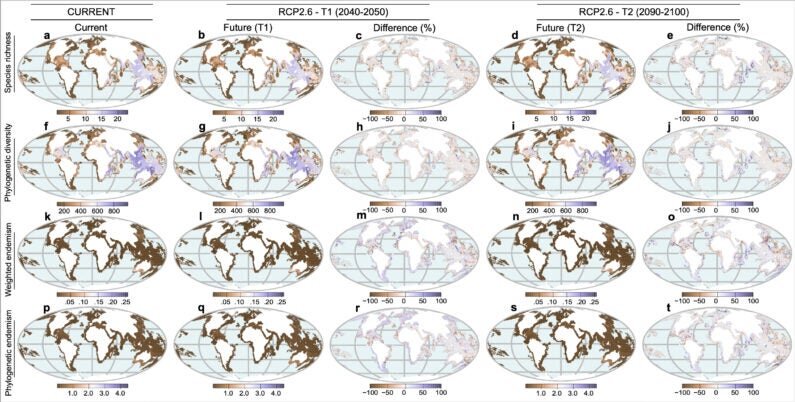Hidden beneath the tranquil depths of coastal waters lie seagrasses. These underwater meadows play a vital role in the marine ecosystem, benefitting both humans and the planet. They produce oxygen, absorb carbon dioxide, and provide food and shelter for marine life. However, a recent study conducted by Stanford University suggests that seagrasses may be under threat of disappearing due to climate change.
The impact of climate change on marine species is a cause for concern, as oceans absorb a significant amount of excess heat from greenhouse gas emissions. The study aims to understand how seagrasses, which play a foundational role in the marine food chain, will respond to climate change. Barnabas Daru, the lead author of the study and assistant professor of biology at Stanford, emphasizes the importance of this question.
Seagrasses have a rich history, having originated in the ocean, migrated to land, and returned to the sea millions of years ago. They serve as grazing grounds for herbivores, such as green sea turtles, manatees, and parrotfish. They also provide shelter for various marine organisms and act as nurseries for commercial fisheries. The survival of many species, including humans, is closely intertwined with the health of seagrasses.
Modeling the worldwide distribution of seagrasses is a complex task. The researchers utilized data from various sources to map the location and abundance of each seagrass species. They also incorporated climate data from the present and two future time periods to create global “snapshots.” These snapshots were used to model different climate scenarios and predict the potential changes in seagrass populations.
The study revealed that seagrasses will experience significant reductions in species diversity and composition in the future. Even under the “best case” scenario, seagrasses showed declines in abundance and composition. This highlights the need for more targeted conservation efforts to protect these important ecosystems. The current network of marine protected areas is insufficient to safeguard seagrasses from the impacts of climate change.
The findings of the study also emphasize the importance of preserving the distinctiveness and uniqueness of seagrass communities. Homogenization of these communities can have detrimental effects on biodiversity, making them more susceptible to disease and extreme weather events. This can disrupt ecosystem services and threaten the survival of marine organisms.
Despite the challenges, there is hope for the future of seagrasses. The study identifies hotspots where conservation efforts should be focused to protect species diversity and phylogenetic diversity. By directing policymakers and conservationists towards these priority regions, seagrasses can have a better chance of survival.
In conclusion, this study sheds light on the potential impacts of climate change on seagrass meadows. It urges action to protect these vital ecosystems and emphasizes the need for targeted conservation efforts in specific regions. By safeguarding seagrasses, we can help preserve the health of the marine environment and ensure the survival of numerous species.
Denial of responsibility! TechCodex is an automatic aggregator of the all world’s media. In each content, the hyperlink to the primary source is specified. All trademarks belong to their rightful owners, and all materials to their authors. For any complaint, please reach us at – [email protected]. We will take necessary action within 24 hours.

Jessica Irvine is a tech enthusiast specializing in gadgets. From smart home devices to cutting-edge electronics, Jessica explores the world of consumer tech, offering readers comprehensive reviews, hands-on experiences, and expert insights into the coolest and most innovative gadgets on the market.


